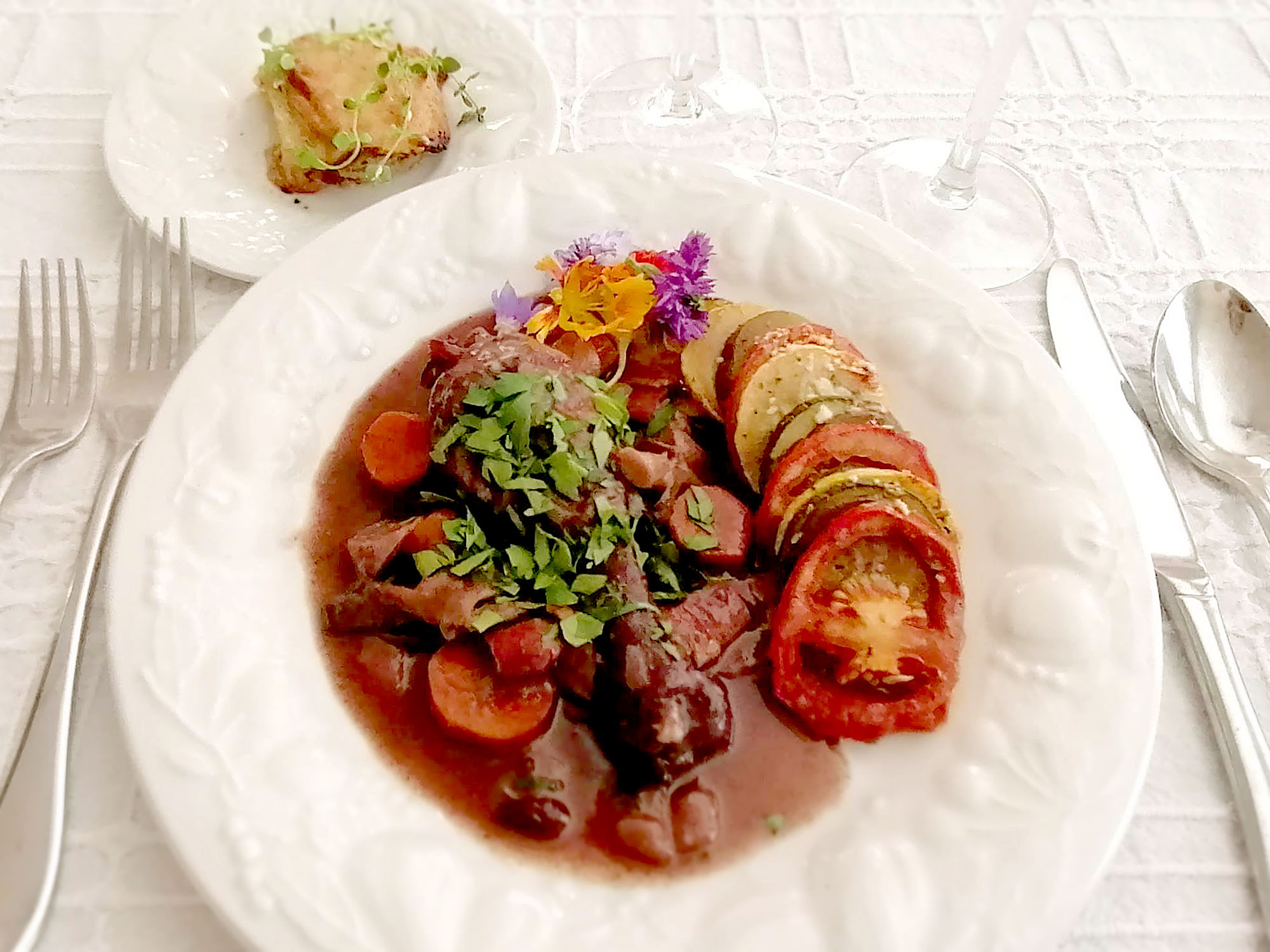On a recent European vacation, I splurged and booked my first river boat cruise. CroisiEurope — a French company that claimed to be the world leader in river cruises — was having a sale, and one of their Elbe River itineraries was half off. The website promised a weeklong cruise with all-you-can-eat French gourmet meal plan. This being a French boat, all the wine, beer, champagne, and cocktails one could drink was also included. Of course, I booked immediately. Who cares where the boat was going? I was onboard for the food. (Psst, want to see some French food porn?).
When I returned home, I dreamed of French cuisine for weeks. There are no French restaurants in Champaign-Urbana, so if I want a French dinner, I’ll just have to cook it myself. French cooking comes easily to me because the first cookbook I ever owned was Paul Bocuse’s French Cooking. Over the years, I’ve cooked many dishes out of that book, but it wasn’t until later that I finally figured out who this man really was. Monsieur Paul was just the inventor of nouvelle cuisine, was named the Pope of Gastronomy for France, and honored as the Chef of the Century by The Culinary Institute of America.
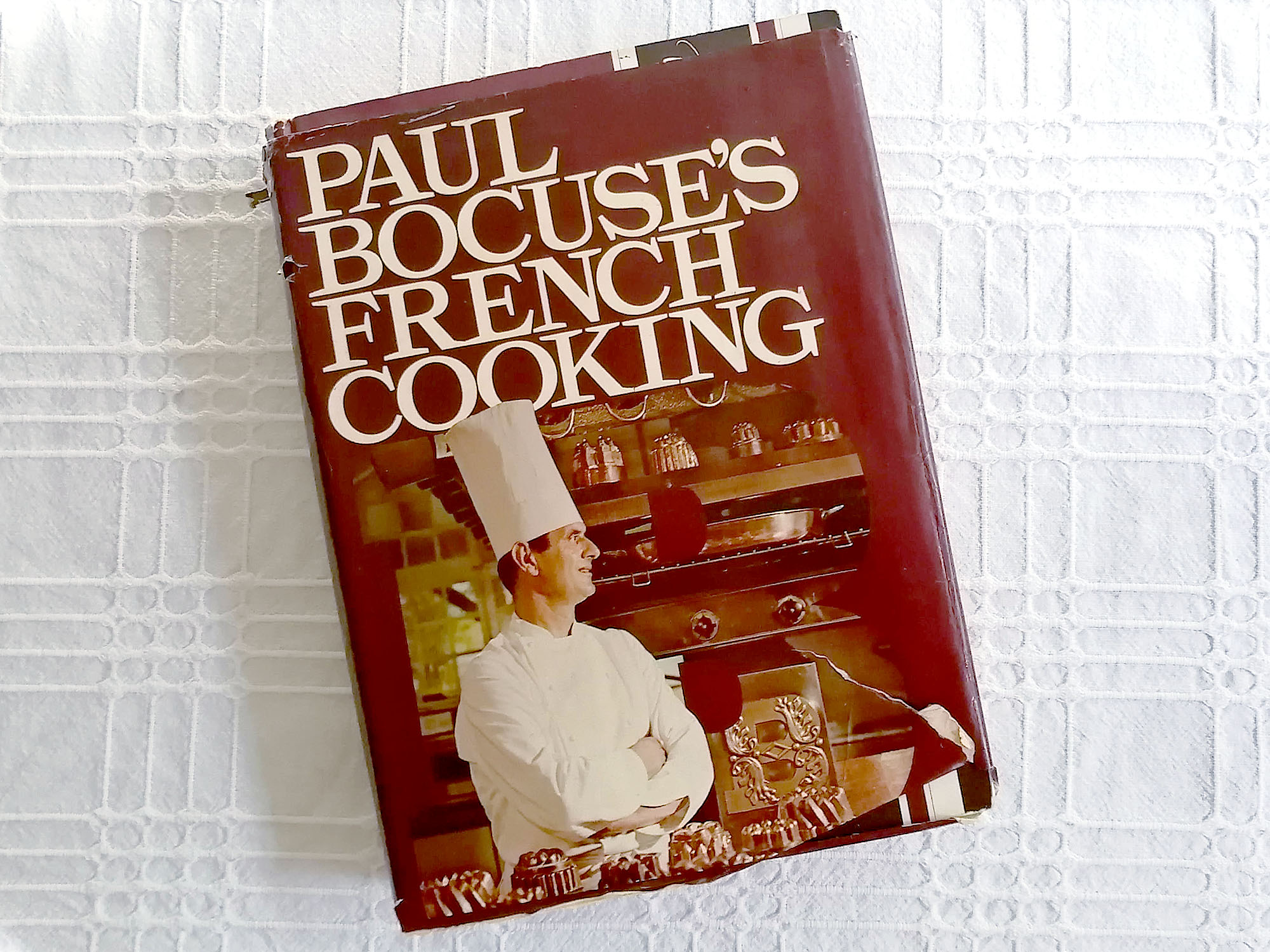
Photo by Paul Young.
“Every morning I go to the market and stroll among the displays,” says Bocuse in the book’s introduction. “Sometimes I do not even know what dish I will make for the noon meal. It is the market that decides.”
So one Saturday morning, I embraced his philosophy and went shopping at the Urbana Market at the Square, our own version of Les Halles de Lyon where Monsieur Paul shopped. Our market was in full swing. As I walked the aisles, the delightful ingredients were all whispering in my ear. All I had to do was listen.
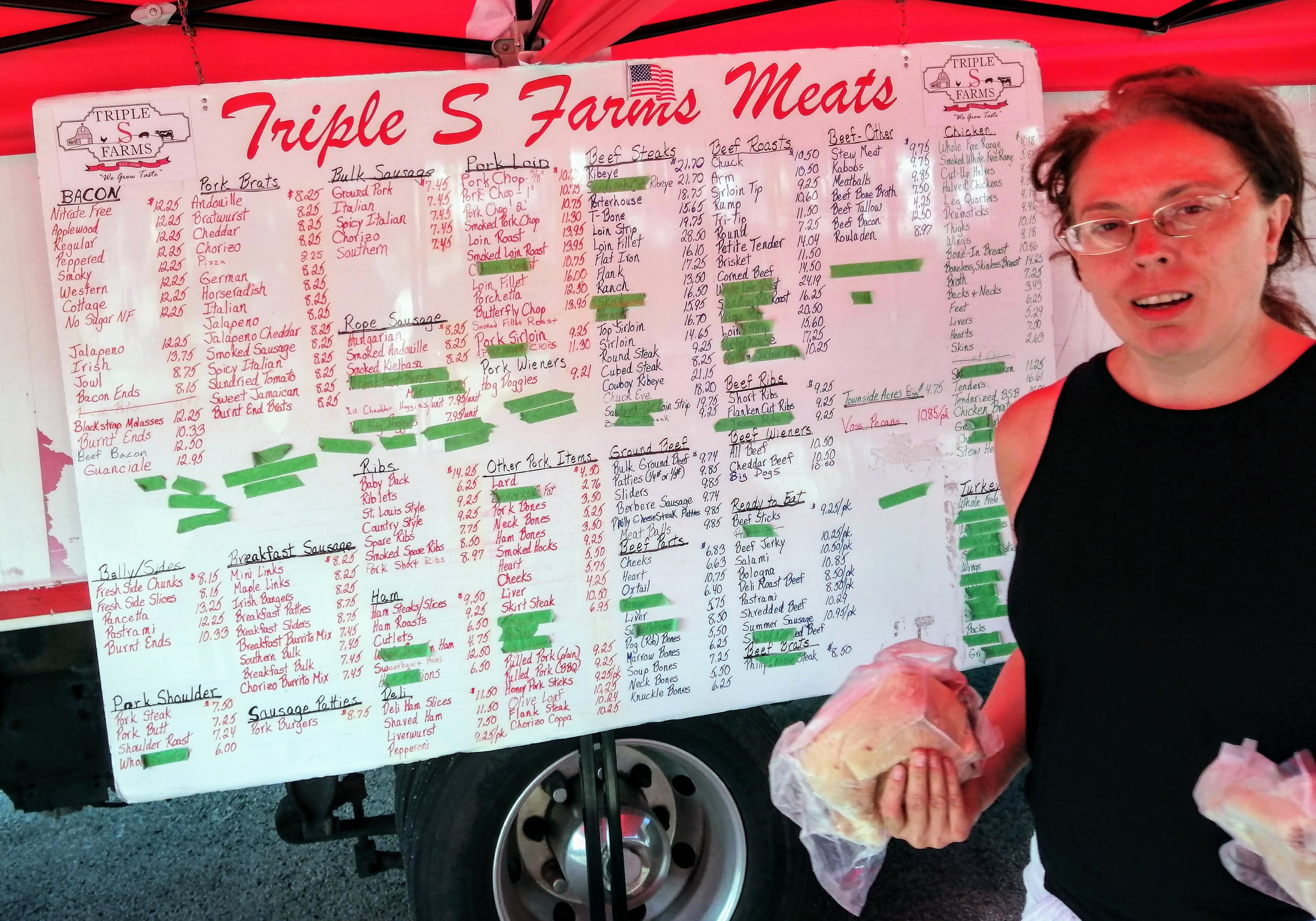
Photo by Paul Young.
I’m a carnivore, so my first stop was Triple S Farms for organic free-range, antibiotic-free meat. The chicken was a reasonable price, so I started my meal plan with a few leg and thigh quarters for $4 per pound.

Photo by Paul Young.
Flyway Family Farm had a particularly full offering of mushrooms that day, and the pearl oysters ($5 per quart) looked amazingly healthy. That sealed the deal: chicken and mushrooms equals coq au vin in my mind. and those high quality mushrooms looked ripe and ready to soak up a serious red wine sauce.

Photo by Paul Young.
Coq au vin is a chicken stew, and all stews start with onion and garlic. Sola Gratia Farms had quite a selection, so I helped myself to some of every color ($2.50 per pound).

Photo by Paul Young.
Now that the entree was decided, it was time to think about a side dish. Meyer Produce came to the rescue with a lovely selection of beautiful Japanese eggplants ($3 per pound). These dark purple tubers look like the perfect size to slice up into rounds for a ratatouille, and so our first side dish was decided.

Photo by Paul Young.
Meyer also had both yellow squash and green zucchinis in stock ($2 per pound), so I chose a few of each color with the same diameter as the eggplants to round out the dish. I had purple, yellow, and green; all I needed was a little red. Fruitful Vines was a few steps away, so I grabbed a few small roma tomatoes that had the same diameter as the other veggies ($4 per pound).

Photo by Paul Young.
As we passed by Delight Flower Farm, I spotted a cooler with a sign that read “edible flowers.” Of course, I had to peek inside, and what I saw was a rainbow of colorful little morsels that will make any dish Instagram-ready ($5 per pint).
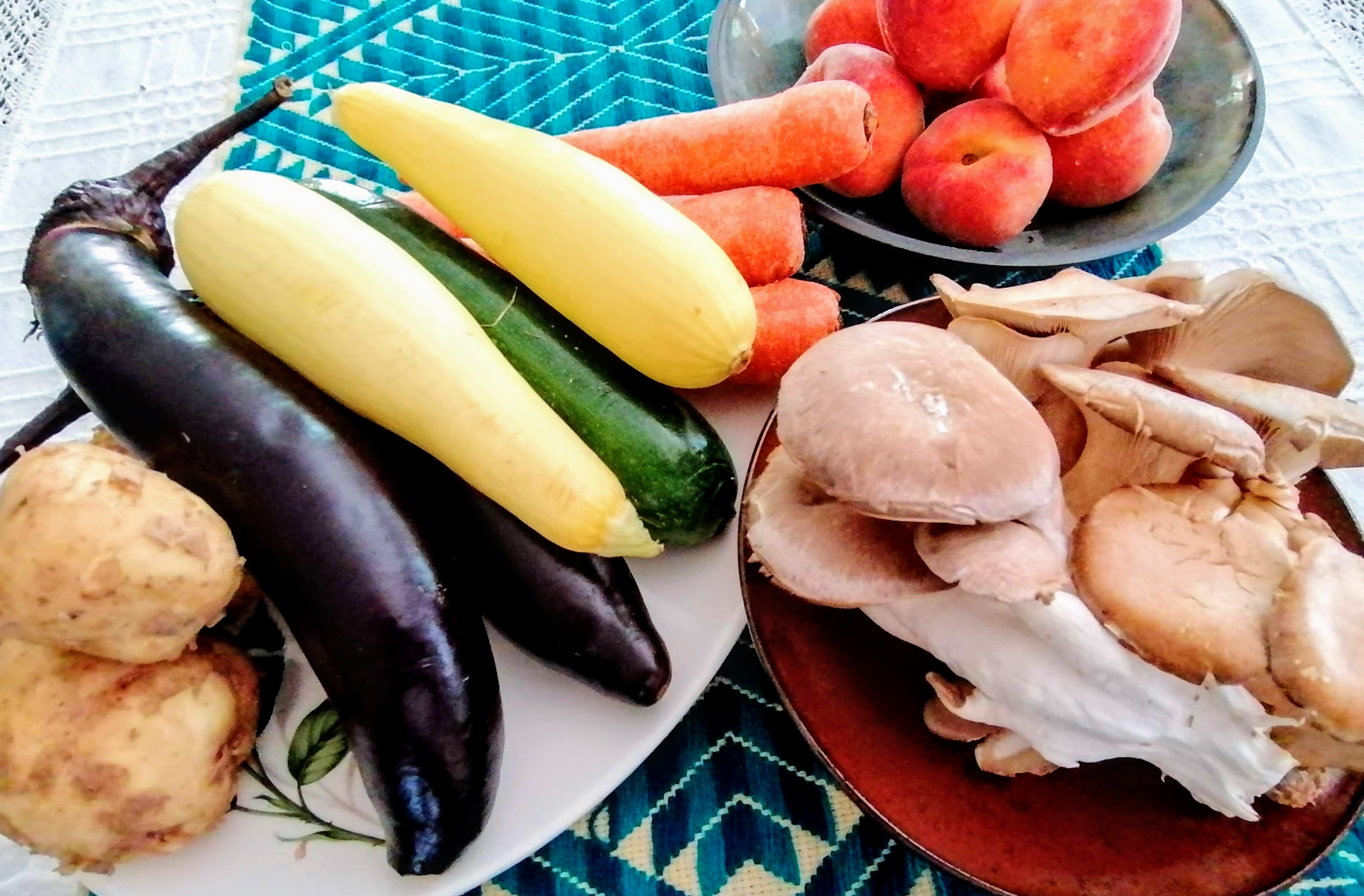
Photo by Paul Young.
Paul Bocuse writes that it is necessary to leave some part of cooking to improvisation “and a certain margin for fantasy.” With this in mind, I studied his recipe for coq au vin, absorbed his wisdom, and immediately abandoned his method.

Photo by Paul Young.
In my version, I cooked the chicken and sauce as separate dishes and then combined them just before serving. From past experience, I know that chicken always tastes better marinaded. I made a garlicky red wine marinade with a little vinegar and sugar, poured the flavor-infused liquid over the chicken, and then let it rest overnight in the refrigerator. The next day, I added carrots to the same baking dish and baked both the carrots and the chicken in its own marinade. An hour later, the chicken was done, and the marinade was now a sauce having lost half of its volume.
While the chicken was baking, I made a bacon-mushroom sauce on the stove top and finished it with some of the reduced wine sauce. These were older heritage chickens who lived a cage-free life, so the meat was a little tough and gamey, almost like a duck, but the rich red wine sauce complemented the chicken perfectly, and the sauce-soaked mushrooms were ever so tender and juicy (see recipe).
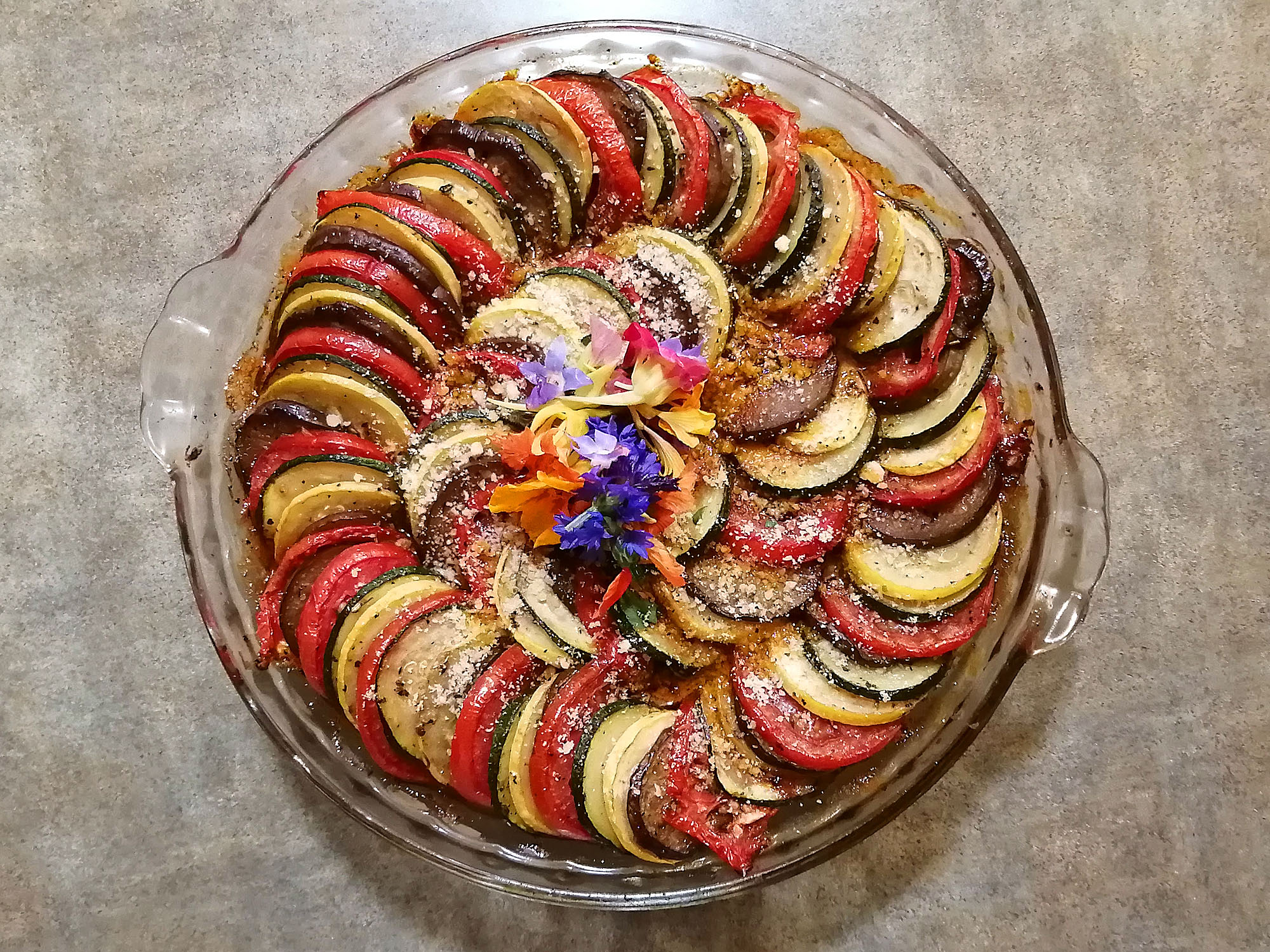
Photo by Paul Young.
Paul Bocuse did not have a ratatouille recipe in his book, but the Internet was full of exciting ideas for this dish. There appeared to be two basic versions of ratatouille: a rustic homemade version and a gourmet restaurant version. The ingredients and the methods were similar, but the gourmet version looked prettier. When it comes to recipe writing, my philosophy is, “Why reinvent the wheel?” Many very smart people have published great recipes on the web with clever shortcuts and some great tips. I’ve stolen ideas from most of them, and in fact this recipe is a mash-up of the best ideas I could find. It’s basically a Mediterranean-style vinaigrette-dressed roasted vegetable dish elevated to a new level by the creative arrangement of the veggies.
That first cookbook did a lot more than just teach me the basics of French cooking. As an impressionable teenager, I had caught that dreaded bug — francophilia. You can’t get rid of this virus — once you catch it, it just keeps growing and spreading in your mind. Sure, it starts with food, but soon I was listening to Serge Gainsburg, reading Marguerite Duras, and watching François Truffaut films. Some of my favorite filmmakers? Alain Resnais, Jean-Pierre Jeunet, Luc Besson. It was hopeless.
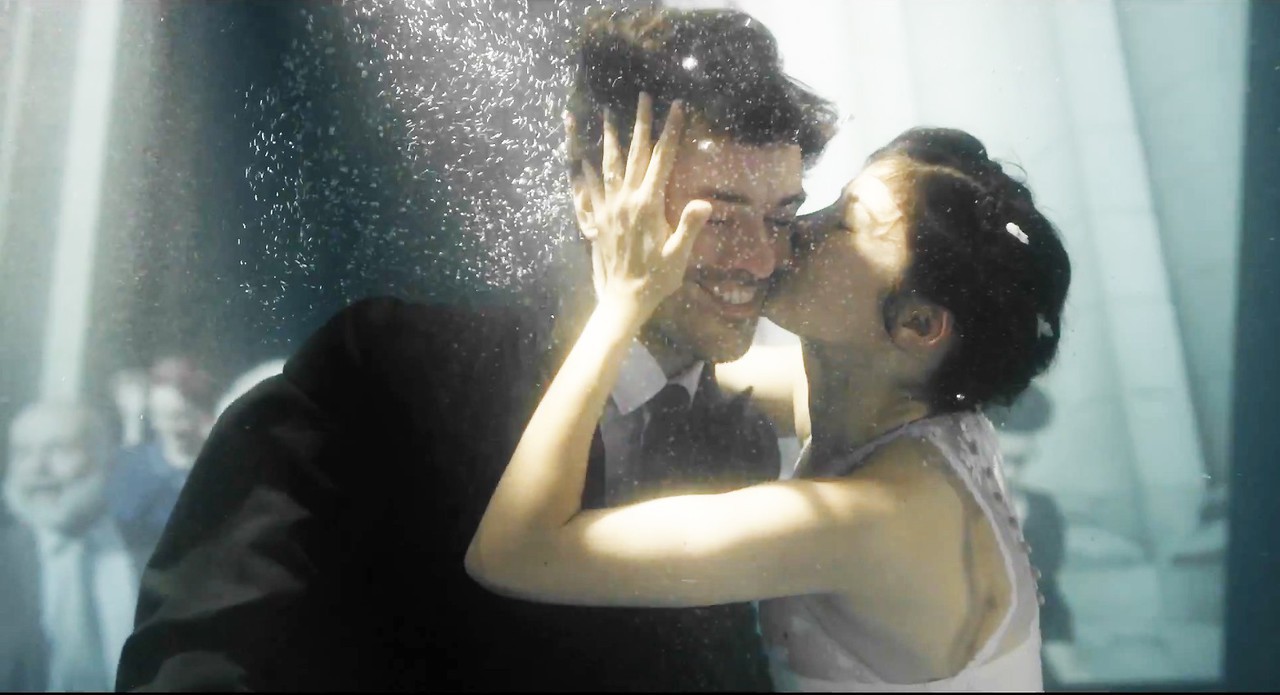
Photo courtesy of Drafthouse Films.
As a francophile, I have a special place in my heart for French movies, but Michel Gondry — perhaps the most French of French directors — is my all-time favorite filmmaker. I’ve seen all of his movies and most of his music videos. I am convinced that he is truly a mad genius and surely the most creative visual stylist in the world of film. You know him already; he is the director of record for all of Björk’s music videos, made the White Stripes Fell in Love with a Girl “lego” music video, even invented bullet time for the Rolling Stones’ Like A Rolling Stone video (yep, the Wakowski sisters stole the technique from him), and he is most famous in the U.S. for directing and co-writing Eternal Sunshine of the Spotless Mind (which won him an Oscar). But his magnum opus is Mood Indigo which was cut by 36 minutes when it was first released. Even with Audrey Tautou (Amélie) headlining the movie, the film only grossed a dismal $303,187 in the US in its initial theatrical run. What went wrong?
As a Gondry nut, I drove to Chicago to see his latest movie when it first opened in 2013. Despite being a devoted fan, I was very disappointed by the chaotic mess that I saw on screen. Upon a second viewing of Mood Indigo on DVD, I started to appreciate the craft that went into the making of this insane movie. I finally “got it” on the third viewing and realized that what we have here is a stunning flawed masterpiece, a complete mind dump of a mad genius. So I hunted down a copy of the extended version (available on BluRay), and it’s been sitting in my screening room waiting for just the right evening to screen. This was the evening that I finally saw the entire 135-minute director’s cut of his “inaccessible” masterpiece.
My jaw dropped and stayed open from the very first shot to the end of the opening credits, a sequence that lasts eight minutes. What I thought was chaos on the first viewing has now evolved into the most sustained exuberantly joyous sequence of pure fun and whimsy ever captured on film. Sure, it seemed like this sequence was edited together by a 10-year old who forgot to take his Ritalin, so after the credit sequence was over, I immediately rewound and watched it again. This amazing opening sequence set the stage for entering the deranged mind of a man who seemed to thrive in an absurd surrealist dream world of child-like innocence filled with constant visual motion, vibrant colors, crazy mechanical inventions, wacky visual puns, and food that is scary and tasty-looking at the same time.
Gondry is a visual storyteller, and this telling of the classic boy-meets-girl, boy-loses-girl love story is as much about the mechanics of filmmaking as it is about loyalty, devotion, passion, life, and death. For a film stuffed with amazing Georges Méliès-inspired in-camera visual trickery, jaw-dropping stop motion animation, invisible digital effects, and genius mechanical technical wizardry, the movie’s soul remained intact as the audience is taken on a manic emotional rollercoaster ride with the craziest highs and the darkest lows.
The movie may not make total sense, but then neither does life. This film was made by a crazy French artist for an elite French arthouse crowd. Viewers may not get some of the Jean-Paul Sarte jokes, but that’s okay. It’s still a wild thrill ride that swings from silly slapstick to horrifying claustrophobia, from a wild colorful acid trip to a nightmare so dark that by the end of the movie all the color is sucked out of the screen.
Produced at the height of his creative career, Gondry’s Mood Indigo may be his lifelong masterwork — or it may be remembered as a self-indulgent mess and held up as an example of what happens when a mad genius is allowed to indulge in his every whim without any restraint.
Even as a flawed masterpiece, Gondry’s genius shines through. Mood Indigo is the furthest thing from the chaotic mess that some people think it is. Instead it is a completely logical linear story set in a dream-logic world. In fact, the entire movie is one long lucid but incoherent dream sequence from the first frame to the last, a full-on two-hour-plus vivid dream that turns into a nightmare you can’t wake up from. Can you handle it?
The 95-minute theatrical cut of Mood Indigo is currently streaming by subscription on Hulu and for free on Kanopy (for Champaign-Urbana public library card holders and people with access to the Parkland or U of I libraries).
Urbana Market at the Square
East Illinois Street and South Vine Street
Urbana
Sa 7 a.m. to noon, rain or shine
When he is not watching one film a day, Paul Young likes to travel the world seeking good things to eat. So far, he has eaten his way through 25 countries, and he loves to share his culinary discoveries with cooking classes.








